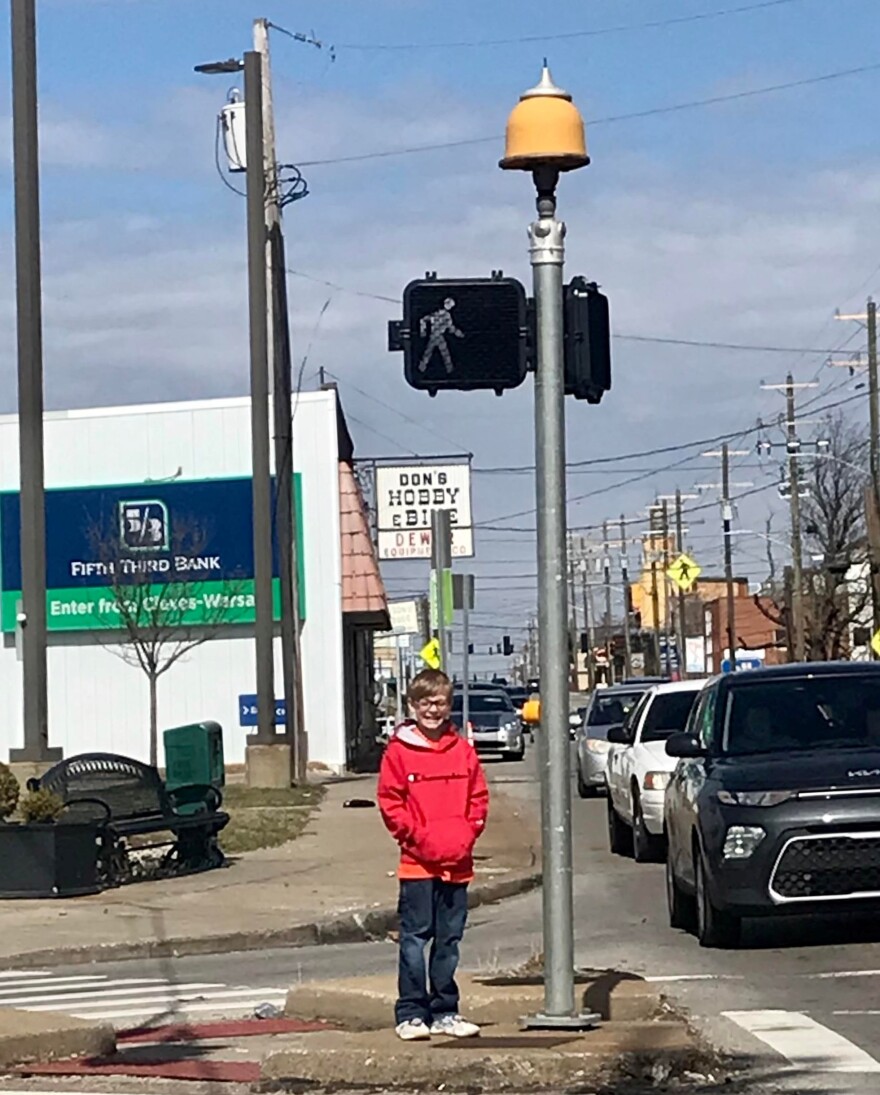OKI Wanna Know is a chance for you to get an answer to that question that's bothered you for years, but isn't exactly headline-grabbing. This week, we find some illumination on a traffic control device around Cincinnati.
Andre Atkinson of Corryville says ever since he moved to Cincinnati about 22 years ago, he's been fascinated by the yellow, acorn-shaped lamps you can find in a number of Cincinnati neighborhoods.
"They're not just a local neighborhood kind of lamp, but they're so far out, it must have been some project, some lighting project, and it's curious to think about the history," Atkinson says. "And also the shape. The shape is just... I've never seen that shape anywhere else. I've only seen it in Cincinnati, and you see it all over."
Atkinson isn't alone. Levi Hagedorn of Price Hill is also a big fan of the lights.
"They're just kind of cool things, I think," he says. The 10-year-old will spend the summer trying to get pictures with as many as possible.

Hagedorn says he knows they won't be around forever.
"There's one that recently got crashed into, and it is no longer there. It got hit by a car. It's photo-documented, so there's a picture of it before and after."
Hagedorn first started his quest last summer, with a picture in front of a light.
"I actually went to the one up on Cleves-Warsaw and Glenway. I have a short list of some because I found this Google Maps that shows the location of most of them," he says.
That map was created by another fan of the yellow lamps.
"I've done kind of a poor job of keeping up with that, but at its height, I had over 60 locations marked as current on there," says Christopher Fellerhoff.
Fellerhoff grew up in Cincinnati, but now lives in Tampa. Before he drew up the map, he started a Facebook page to document what are officially called "island lights."
"To the best of my knowledge, they're warning devices to let people know when there's some sort of interruption in the roadway, such as a raised island at an intersection or in the median of a roadway."
Fellerhoff says while he was growing up in Mount Washington, he was aware of the island lights, but didn't really pay attention until he was driving with a friend.
"He's a guy who kinda notices stuff like this. 'What is that?!? It's like this weird little hat in the middle of the road! What is that?' And my mom was with us and she's like 'Oh, those are things from the streetcar days,' and that kind of registered in my mind that it was actually something unusual."
Fellerhoff says although he's moved away, he thought the island lights were worth preserving. He saw other efforts to save things like steps along different Cincinnati hillsides and thought the same could be done for the lights. That's what led to his Facebook page, and the map.

"I had over 60 locations marked as current on there. There were another 15 or so that people had seen and taken pictures of, but then we noted that they had fallen down. So I'd still guess that hopefully there's maybe 50 or so still left around," Fellerhoff says.
Bad news: Cincinnati's Department of Transportation and Engineering says there are only 36 lights still in use. The department isn't sure when the island lights were first installed. The first construction drawings are from 1972, but similar lights were used at streetcar stops before then.
Island lights are being phased out, because the city can't get replacement parts, and there are more efficient ways to light up streets, intersections and islands.
Levi Hagedorn is a little disappointed, but he understands.
"Because there are other things that should be put money into first."
If you have a question that seems a little weird, try asking OKI Wanna Know by filling out the form below.




